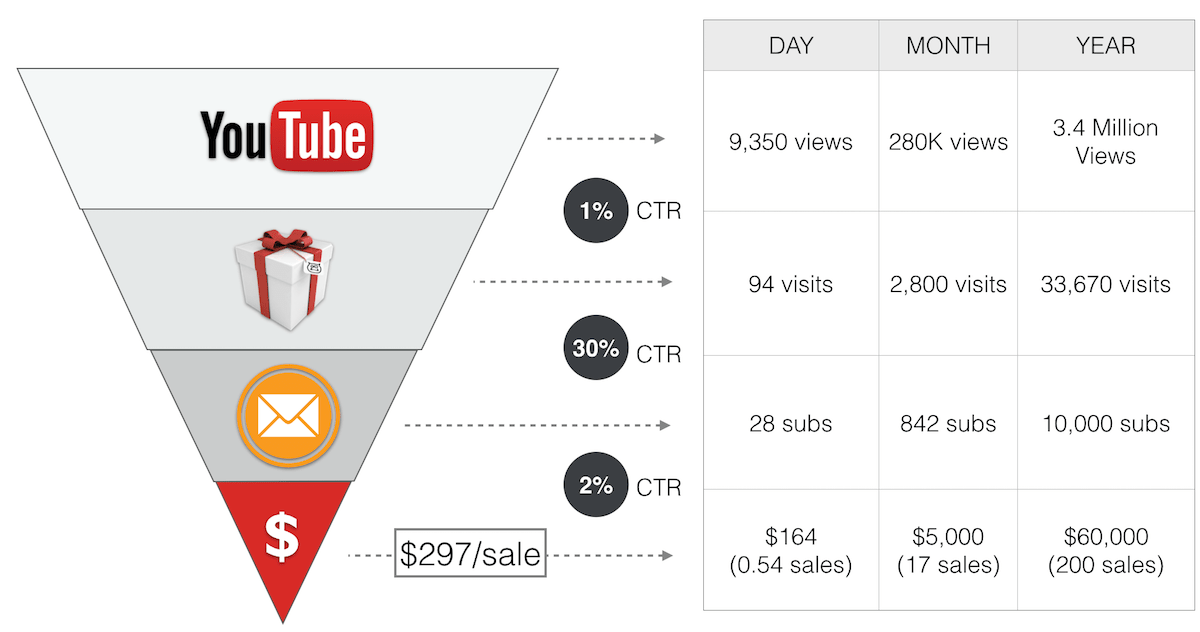So many people want to quit their job and live the dream of making a nice living online.
That’s the dream that Tim Ferris sold to millions in the 4-Hour Work Week.
What Tim didn’t mention is that to get to the 4-hour work week takes an average of 2 years worth of 80+ hour work weeks.
There are exceptions of course, but as someone that has been making a living online for the last 9 years, I can assure you those exceptions are very rare and don’t last too long.
How long do you think you’d be able to maintain the same income working 4 hours a week?
The answer is not too long. Proof – Tim still works 12+ hour days².

So who would want to quit their job to build their own online business?
Answer: People who can endure working 10+ hour days for extended periods, who can’t stand working for someone else, and who are willing to risk a lot to live a life on their own terms.
If you meet that criteria keep reading and I’ll tell you exactly what it takes to get to a point where you can make enough money online to quit your job. If you don’t, well… you better stick to your 9 to 5 job for as long as you can.
Data-Driven Success: The Exact Numbers To Make A Living Teaching Online
Many of you know I’ve been crunching numbers for the last 2 weeks to figure out exactly what it takes to make a living teaching online selling online courses.
Well, after all this number crunching, I’ve come up with a number.
Are you ready?
The number is 28.
That’s it? yes, that’s it.
Let me explain.
To be able to quit your job you need to be able to add to your email list at least 28 subscribers a day.
Why?
Simple math. If you get an average of 28 subscribers a day that is about 10,000 subs a year.
Generally, you can assume that at least 2% of your email list will purchase, so 2% of 10,000 is 200 sales a year.
If you sell your course for $297 apiece, that adds to $60,000 a year in revenue which would put you well over the you-can-quit-your-job-threshold (the US median household income.)
The math is simple, but what does it take to get 28 new subscribers a day?
Well, let’s do some quick reverse funnel engineering and find out.
For simplicity’s sake, let’s assume you have in place a straightforward YouTube-to-Freebie sales funnel as described here.
To get 28 new subscribers a day, you’ll need two things: 1. A reliable source of traffic (YouTube) and 2. A reliable way to convert some of that traffic into email subscribers (Opt-in page offering your Freebie).
If your opt-in page converts 30% of visitors to subscribers, you’ll need to drive 94 visits from YouTube to your opt-in page every day to get 28 subscribers a day.
On average, about 1 in 100 people that watch a YouTube video will click on a card or annotation. That’s a 1% conversion rate, so to get 94 clicks you’ll need to get at least 9,400 views a day across all your YouTube videos.
That means to make $60,000 selling your $297 online course driving traffic from YouTube, your channel will have to get about 3.4 million views a year.
Here is what that funnel looks like:

How do you get 3.4 million views on YouTube a year?
1. You work hard. 2. You get lucky or 2. A combination of 1 and 2.
If you get lucky you can get 3.4 million views with a single video in less than a month.
I know because that’s exactly what happen to me last month with this video.
But luck is not a good strategy. I’ve posted over 500 videos over the last 7 years and “got lucky” once.
The reliable way to get to $3.4 million views more a year is to… can you guess?
Yep. Work hard.
But how hard?… well, let’s find out!
According to most successful YouTubers the best formula to grow your channel comes down to the QVCA formula.
That formula doesn’t specify how often you should post videos, it just emphasizes that whatever schedule to choose, it should be consistent (the “C” in QVCA).
So you can choose to post daily but then it will be very difficult to keep the quality high (the “Q” in QVCA).
Let’s assume you stick to posting weekly a high-quality video.
That’s about 50 videos a year. To achieve high quality, you’ll need to put quite a bit of effort making each video. Between scripting, shooting, editing, and uploading less assume 10 hours of work per video.
That amounts to 500 hours of work a year just uploading videos to YouTube.
Most YouTubers only start seeing meaningful results after the first year. And if you keep it up, by the end of the second year, you should be getting thousands of views a day across all your videos.
The beautiful thing about content marketing (creating videos, writing articles) is that it has a great cumulative effect.
Think about it. After 2 years posting weekly you’ll have uploaded 100 videos. We estimated you would need about 9,000 views a day to get to $60,000 a year selling online courses. That means, after you upload 100 videos, you’ll only need to get 90 views per video to reach your 9K views per day goal!
Can you speed Up the process?
Of course. You can work harder and cram 1,000 hours of video production in one year (or more if you are Casey Neistat). Or you can work smarter, by collaborating with other YouTubers and leveraging each other’s audiences.

Either way, you need to be ready to put at least 1,000 hours of work creating great content to get to a level where you can consider quitting your job selling online courses (or anything for that matter).
And that’s only marketing stuff. That amount doesn’t include creating your online course and setting up all the infrastructure to run your online business (the complete breakdown of labor and costs is here.)
Conclusion, if you put your head down, focus, and create great content on a consistent basis for the next 2 years, I can “almost” guarantee you maybe be able to quit your job and live the Tim Ferris lifestyle (that is, working 12+ hour days doing whatever you want).
How far are you from getting 28 email subscribers a day?
Peace, love, and data-driven growth cookies.
Miguel

P.S: If your numbers differ a lot from mine please let me know. The more everyone contributes their metrics, the more accurate picture we can paint of what it takes to succeed online.
P.2: Based on his output (podcast, books, trips, TV shows, etc.), Tim works way harder than the average 9-5er. However, Tim’s goal was never to be idle but to spend as much time possible doing whatever he wants.
P.3: YouTube is ideal for online teachers but it shouldn’t be your only source of traffic. You should still have a blog and post on social media regularly. Either way, they all should add to about 500 hours of work a year minimum.
Do you want to win a FREE Grumo t-shirt? To enter the contest just click HERE. Thanks to our awesome sponsor ShirtBattle.
Did a homo sapiens forward this article to you?
That human was very sapiens indeed. If you don’t want to miss my upcoming articles make sure to subscribe to them HERE.
Leave a Reply